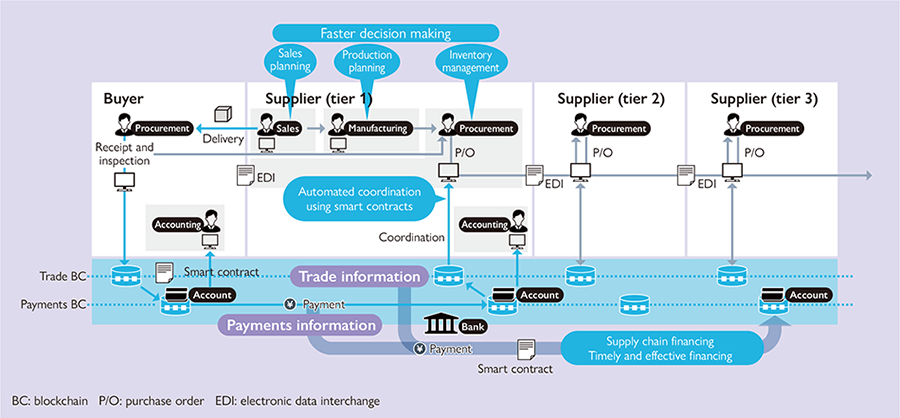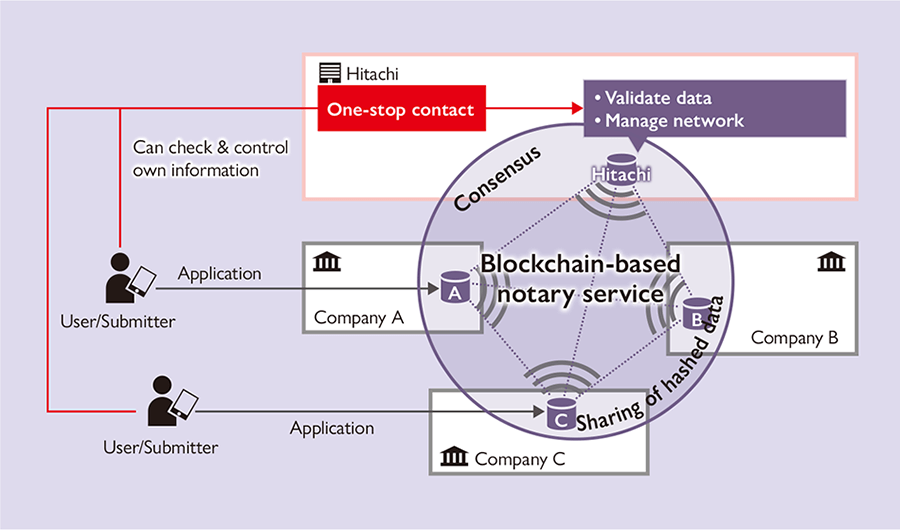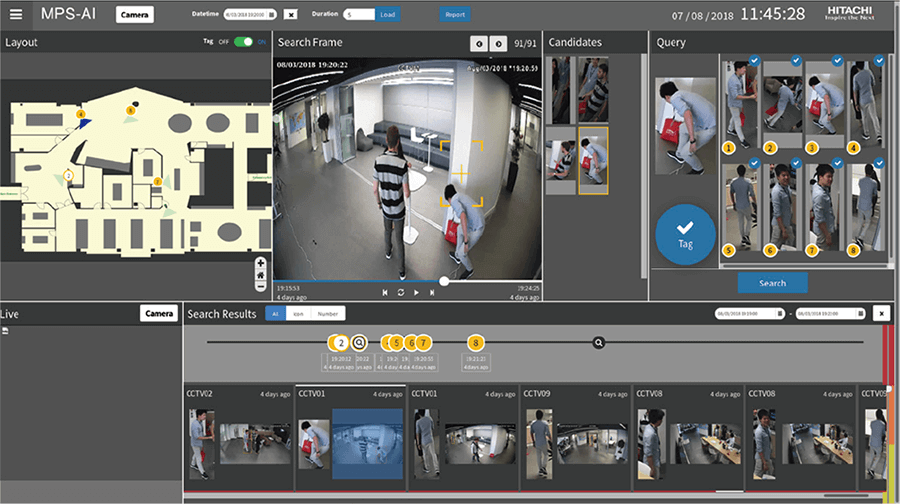1. Vision Design Showing the Way Forward for Society 5.0
Hitachi is engaging in vision design*1 studies whereby it works with other stakeholders to identify specific scenarios for Society 5.0 by raising issues from a consumer's perspective and presenting technologies and services for resolving them. This work is made public through events and the web, including Future Trust, which envisages new ways in which trust manifests in a digital society, and Fare Fund, which presents a vision for urban developments that strengthen community ties.
An important aspect of achieving vision-inspired social innovations is the establishment of an ecosystem for resolving issues. Accordingly, Hitachi has launched initiatives that include forums where industry, academia, and government can debate what forms society should take, such as the new Hitachi-UTokyo Laboratory, and the future living lab*2 that works with community stakeholders to put ideas into practice.
In the future, Hitachi intends to help achieve Society 5.0, not only by pursuing business ideas through the formulation and publication of visions for the future and by putting them into practice, but also presenting these to international agencies.
- *1
- Vision design web page
- *2
- This takes a future-oriented approach to “living labs,” meaning collaborative creation with user and community participation, also involving ongoing social experimentation in the places where people actually live.












